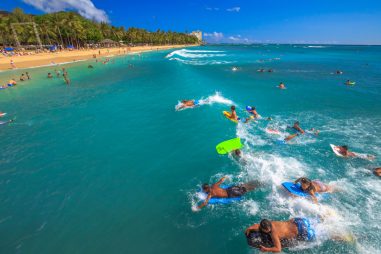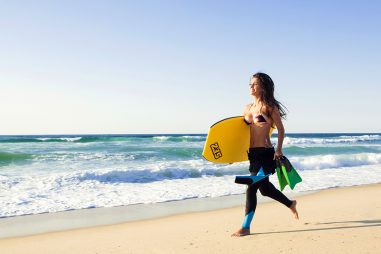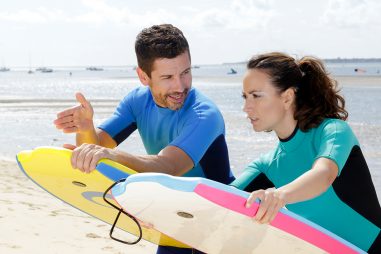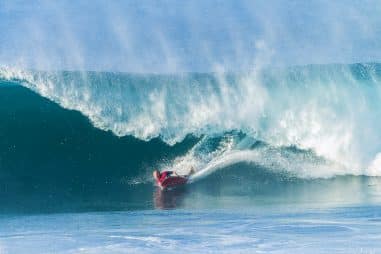
Bodyboarding
Bodyboarding is a watersport where the surfer lies belly down on a specially shaped board and rides it on a wave to the shore. Then the rider swims back to where the waves are and does it all over again. To be precise, it’s not the whole body that’s on the board but only from the trunk up.
An FAQ, what’s the difference between bodyboarding and boogie boarding? Nothing! The “boogie board” is a trademarked bodyboard by its inventor Tom Morey. It’s also called a bellyboard or a sponge. It’s still a lot of fun by whatever name you call it.
The latest models of the bodyboard come with bells and whistles. It can connect to wi-fi, it can be provided with built cameras, and you can surf on it without even any waves. In fact, it should not even be used if the waves are a bit rough. It’s the electric bodyboard. True bodyboarders would argue that it is not an authentic bodyboard, and it would be an uphill battle to argue that point with them.
So, what are the benefits of bodyboarding? We’re talking here of the conventional bodyboard and not the electric one. First and foremost, it’s a fun way to de-stress. You’re spending time on a beach, getting into the water, and soaking up all those Vitamin D. You get to spend your time with like-minded friends and expand your social life. And you get to exercise in a fun way to boot. What’s not to like?
Learning to bodyboard is straightforward. A lesson or two would be sufficient to learn the basics. It’s becoming skilled at it that’s frustrating. You need to put in the effort if you want to excel in it. That means a lot of time practicing and a lot of determination to stick with it despite the wipe-outs that you will undoubtedly run into. But it’s going to be totally worth it with all the positives you will enjoy from it.









